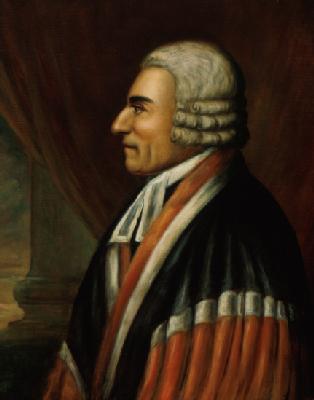"In Europe, a man in a white wig stands in the centre of a crowded courtroom, his. The biggest influence exercised by defence lawyers on trials. Those wigs don't come cheap: Lawyers can earn £1,000 from the taxpayer even for cases which are rejected outright at the first hurdle."
Good Morning Folks,
I am often asked why the Silicon Valley workers get a pass and have made casual Fridays (even hoodies, shorts and skate boards) standard attire, while those of us working in New York still dress up?
We'll if you think it's bad here, you should see the courts in Britain, a style of address we adapted in the United Stated, thankfully only briefly.
Here's a throw back this Thursday via WikiPedia:
Judicial court dress[edit]
During the early history of the United States, the court dress of judges and practicing lawyers closely mirrored British court dress of the 18th century; both wore white powdered wigs and (typically) black robes in the lower courts, and in the higher ones, judges would wear red with black markings. The practice fell out of favor and died out by the mid-nineteenth century.
Today, generally judges of both state and federal courts are free to select their own courtroom attire. The most common choice is a plain black robe which covers the torso and legs, with sleeves. Female judges will sometimes add to the robe a plain white collar or lace jabot. Beneath the robes business attire is standard.
Until the tenure of Chief Justice John Marshall, all Supreme Court justices wore red robes with ermine trim and full-bottomed wigs, reminiscent of British court dress. Marshall, however, eschewed this formality and began the practice of only wearing a black silk robe, with no wig. In 1994, Chief Justice William Rehnquistadded four gold bars (similar in appearance to captain insignia in the US Navy) to each sleeve of his black robe, but the change in his attire (he had been Chief Justice since 1986) was his own innovation and was inspired by a production of the operetta Iolanthe, rather than any historical precedent. His successor, John G. Roberts, chose to stick with the traditional plain black robe.
Some Supreme Court justices (including Clarence Thomas, Antonin Scalia, and Stephen Breyer) maintain the ancient legal practice of wearing large black skullcaps, in their case when wearing their robes outdoors in cold weather (for example, at presidential inaugurations in January.)
Many state supreme court justices wear unique styles of robes, the most notable being the Maryland Court of Appeals, where all judges wear red, and British-style tab collars. The judges of the Delaware Superior Court continue to wear the red sashes or baldrics of their British predecessors, albeit now only on ceremonial occasions.
Some judges eschew special dress entirely and preside over their courts in normal business wear. This is often seen among administrative law judges who preside over relatively informal administrative hearings.
Attorney court dress[edit]
Lawyers wear normal business attire in courts of all levels. During the second-wave feminism movement in the 1970s, some judges forbade female attorneys from wearing trousers when appearing in court, but pantsuits are now widely accepted. Like judges, American attorneys do not wear wigs.
Until the 1970s, morning dress was required of all attorneys appearing before the United States Supreme Court by the Court's rules. Even after the Court abolished the requirement, the Office of the Solicitor General maintained the practice. When the Solicitor General (or any of the deputies) appears before the U.S. Supreme Court, he wears morning dress, with striped trousers, grey ascot, waistcoat, and a cutaway morning coat.[9] A feminized version is sometimes worn by female deputies, which consists of the same garments tailored to female measurements. Former Solicitor General Elena Kagan, the only woman to hold the office to date, appeared before the Court in pantsuits in lieu of morning dress. The traditional female equivalent of morning dress (a formal gown) is strictly for social purposes, so it would be inappropriate attire for appearances before the nation's highest court.[10][broken citation] The Court's Marshal and Clerk of both genders also wear morning dress when the Court is in session.
I wonder what our kids will be saying about the way we dress for court and to call on lawyers and bankers twenty years from now?
FSO USA is going to dominate the USA. And we cannot do it without you. So Inspire your teams. And help me light up the nation.
Thanks for reading. Thanks for believing. And thanks for being here.






